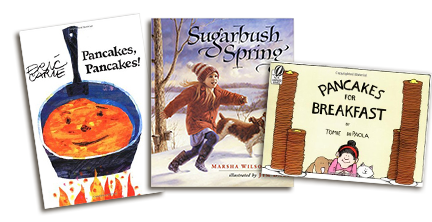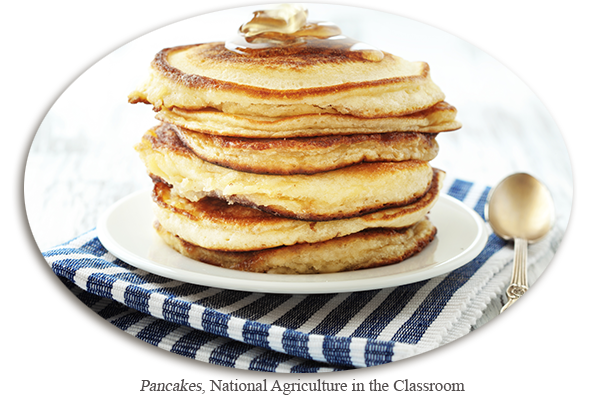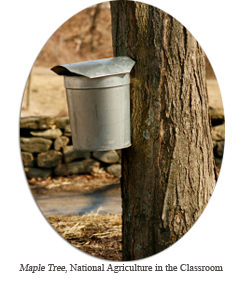The little red hen of folk-tale fame planted wheat and worked hard to make bread. Wheat is at the center of many recipes; the hen could just as well have made pancakes! Pancakes are easily made in the classroom, allowing students to observe the changes that take place as ingredients become batter and batter turns to pancake. As students follow the recipe to make pancakes, they can observe the properties of ingredients at different stages—in their original form, after they have been measured and mixed, and after they have been cooked. This provides a simple and captivating introduction to the difference between physical and chemical changes.
Young students will not have enough experience to determine the difference between physical and chemical changes. Physical changes happen when the form, shape, or appearance of a material changes, but the substance of the material remains the same. Although it may be difficult, physical changes can generally be reversed. For example, mixing flour and sugar, tearing a large sheet of paper into smaller pieces, and freezing water are all examples of physical changes. In contrast, a chemical change creates a new substance with new properties that cannot be turned back into its original form. Cooking pancake batter and burning paper or wood are examples of chemical changes. Generally, a chemical change is irreversible and will create a new material that looks, feels, smells, and/or tastes very different.
The kitchen is a great place for students to make observations and explore the basics of chemistry. Almost all cooking has some basis in the physical sciences. Likewise, most cooking ingredients have some basis in the life sciences. Exploring food production helps engage students in the basics of biology. A discussion of maple syrup production also follows nicely after making pancakes.
Sugar maple trees grow in the northeastern United States; their natural range extends from Minnesota to Maine, south to Tennessee, and north into Canada. A stand of sugar maples that is managed to produce maple syrup may be called a sugar bush or sugar grove. Sugar maples with large, open crowns that gather lots of sunlight are best for syrup production. The sugary sap that is used to make maple syrup can only be harvested in the early spring and is the result of trees responding to seasonal changes in the environment.
During the summer, photosynthesis in the leaves of sugar maple trees turns energy from sunlight into sugar—the food that the tree needs to grow. Trees also need water to grow, which their roots take up from the soil. The trunk and branches are filled with vessels that circulate food and water throughout the body of the tree. In the fall, sugar maple trees prepare for winter by storing sugar and dropping their leaves. The trees go dormant and stop growing for the cold, short days of winter. In late winter, the trees sense that spring is coming. They begin mobilizing stored sugars, getting ready to grow new flowers and leaves. Normally, these sugars wouldn’t move through the tree’s vessels until the beginning of new growth, but the special combination of freezing nights and warm days forces flow in the sapwood.
On warm spring days following freezing cold nights, tapping into the sapwood of sugar maples yields buckets of sweet sap. Boiling and heating this sap condenses the sugars and causes a chemical change that produces the unique taste of maple syrup.
 1 gallon-sized Ziploc bag
1 gallon-sized Ziploc bag What state of matter is the pancake batter? (liquid)
What state of matter is the pancake batter? (liquid) Where does maple syrup come from? (sugar maple trees)
Where does maple syrup come from? (sugar maple trees)